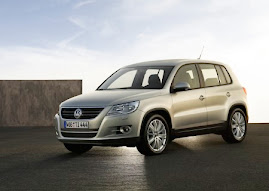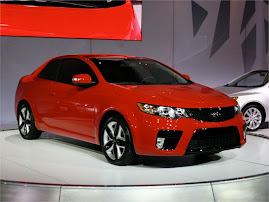
Dresden, Germany — As far as full-size luxury sedans go, the BMW 7 Series has always been the driver's choice, the current car offering excellent power and handling in a neat, albeit unusual-looking, package. No matter how unsightly the rear end looked or how complicated the iDrive system was to operate, the 7 Series was the sportiest thing in its segment. For the 5th-generation version, the company has decided to take its flagship a bit more mainstream, giving the new 4-door a more conventional look and improved touring manners.
A number of 7 Series variants will be offered in Europe, but we'll get only the 750i and 750Li. Our test car was the latter, with a wheelbase extended 10.2 in. (to 126.4) over the base model's. The exterior stylists did a commendable job of making the new 7 look smaller than it actually is. Overall length, width and height are 205.3, 74.9 and 58.3 in., respectively. The face has changed slightly, highlighted by a wider kidney grille and new headlights that feature "eyebrows." The rear end has been thoroughly redesigned, with more conventional-looking taillights that could be from a Lexus. Personally, I prefer the styling of the outgoing car because it was more distinctive, especially the rear end.
A number of 7 Series variants will be offered in Europe, but we'll get only the 750i and 750Li. Our test car was the latter, with a wheelbase extended 10.2 in. (to 126.4) over the base model's. The exterior stylists did a commendable job of making the new 7 look smaller than it actually is. Overall length, width and height are 205.3, 74.9 and 58.3 in., respectively. The face has changed slightly, highlighted by a wider kidney grille and new headlights that feature "eyebrows." The rear end has been thoroughly redesigned, with more conventional-looking taillights that could be from a Lexus. Personally, I prefer the styling of the outgoing car because it was more distinctive, especially the rear end.
That said, the interior of the new 7 Series has been improved twofold, in both design and functionality. The dashboard looks much cleaner with the information screen flush-mounted, making it more visible. The controls, especially the new iDrive system, are easier to operate. The second-generation iDrive is as simple to use as your iPhone, allowing you to scroll back and forth from each structured menu. Going from the audio system to the navigation system to the climate control system no longer requires one to study the user manual; you just press the right buttons on the center console and navigate with the large knob. You can even surf the net using the new iDrive system. Rear-seat passengers can do this on the headrest-mounted monitors while the car is in motion; the driver can do so only when the car is parked.
Under the hood, you'll find BMW's twin-turbocharged direct-injection 4.4-liter V-8. This powerplant, also featured in the X6, puts out 400 bhp from 5500 to 6400 rpm and 450 lb.-ft. of torque from a low 1750 to 4500 rpm, which eclipses the output of the current car's naturally aspirated 4.8-liter V-8 by 40 bhp and an astounding 90 lb.-ft. of torque. What this means to the driver is that when you get on the throttle, this mammoth 4640-lb. sedan runs like a deer. Think of the new 7 as the defensive lineman of automobiles: big, strong and fast. BMW claims that the car hits 60 mph in 5.2 seconds and tops out at an electronically limited 150 mph.
BMW contends that "the suspension should always be faster than the engine." Through the twisty mountain roads outside Dresden, this rang true, as the 750Li carved up the roads like a compact sports coupe. The suspension features Driving Dynamics Control, where the driver can choose among four settings that adjust the stiffness of the tube shocks and alter transmission shift characteristics, engine throttle response and power-steering assist. In Sport mode, the default settings can be adjusted by the driver. In Sport Plus, the Dynamic Stability Control switches to its Dynamic Traction Control setting (reduced traction intervention), which makes the car suitable for track-style driving.
The only concern here was the car's stability at top speed, something I was able to experience on the Autobahn. At 150 mph, the front end feels a bit light. To most law-abiding Americans, this should be a moot point (because the car is absolutely stable at speeds up to 140 mph), which makes you wonder if the chassis was engineered with American drivers and roads in mind. Ride quality is vintage BMW, with the kind of solid, even attitude that has made cars with the spinning propeller emblem a favorite here in the States.
Although a few die-hard BMW enthusiasts might feel disappointed that the new 7 Series is slightly softer than the current car, it's hard to dispute that it is a superior automobile in almost every way. Arriving in the spring with prices beginning in the low $80s, the new 7 will appeal to a broader range of luxury-car buyers while still retaining its label as a driver's car. - http://www.roadandtrack.com













_(544x408).jpg)


No comments:
Post a Comment